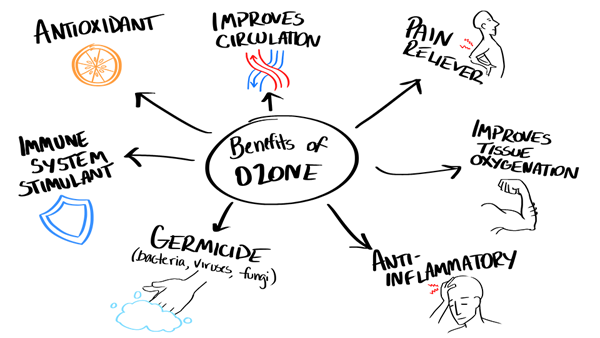Ozone for Air and Mold Treatment-- A Very Misunderstood Ally
Ozone - The word instantly conjures up a number of negative thoughts. "the ozone layer is being destroyed and that has affected soray can products". "Ozone is air pollution. TV weather paople cite ozone as the culprit in the ambient air we breathe." "Ozone is bad to breathe." Now some companies are saying that ozone is good for clensing air and destroying molds in contaminated homes, apartments, office buildings, and the like. Whats going on?
Back to the end of WW1. Chlorine gas had been used to kill soldiers an the battlefields. Not only is Chlorine poisonous and heavier than air (so it can be applied from an airplane and slowly sink to ground level to kill soldiers and civillians as well). But Chlorine had been in use prior to WW1 to treat drinking water. Cholera, typhoid, and other dreaded plague-causing disease organisms were being eliminated in drinking water supplies, saving millions of lives the worl over. People of post WW! era had the same negative reactions to the beneficial uses of chlorine as people of our time now have when introduced to the beneficial uses of Ozone.

Since WW1 chlorine has provided consumers with many can't-do-without products, such as bleached paper pulp, synthetic dyestuffs, textiles, petroleum products, medacines, anteseptics, insectacides, solvents, paints, plastics (PVC films and piping). All of these from something that was used to kill people during a war. How has this been possible?

Now examine the properties of OZONE. It is also a gas, but is made naturally (the ozone layer and as a component of smog). Ozone also can be amn made, with oxygen as its major starting material. This gas is unstable, however, and quickly reverts back to oxygen in a short time (a few hours in air, a few seconds in aqueous solutions). Consequently, there is no possibility to generate ozone at a central manufacturing plant, package, store, and ship to a point of use. Instead, ozone must be generated and applied where it is used.
As with Chlorine, the trick to safe and successful commercial uses of Ozone is to understand its properties, recognize those that are dangerous, and develop techniques to handle the gas so that it can be applied safely.
In the early 1900's Ozone began to be used commercially for drinking water treatment, odour control in meat packing houses, and for mold control in brewery cellars. Concentrations of Ozone applied for these purposes were rather high, (several thousnad parts per million) for drinking water disinfection and rather low (.1 to 10 ppm) for odour and mold removal. The benifits of Ozone for these applicationswere readily apparent, and quickly recognized that this new gas was both a powerful disinfectant and simultaneously a powerful oxodising agent.
Written by Rip G. Rice, Ph.D
